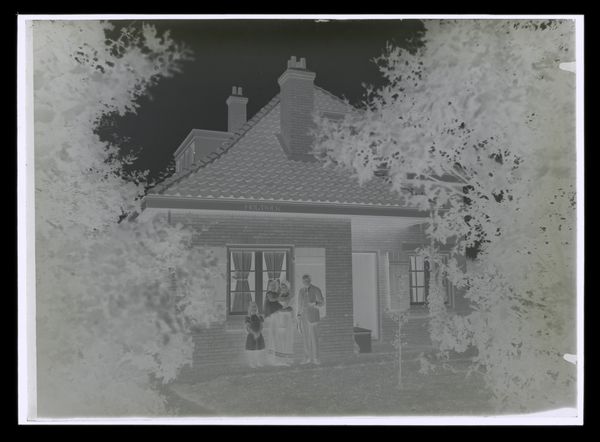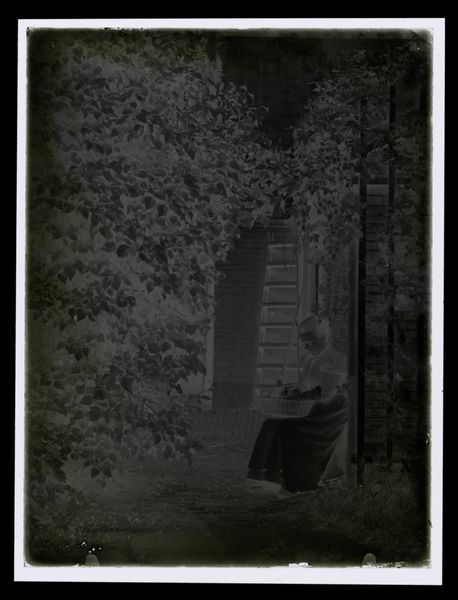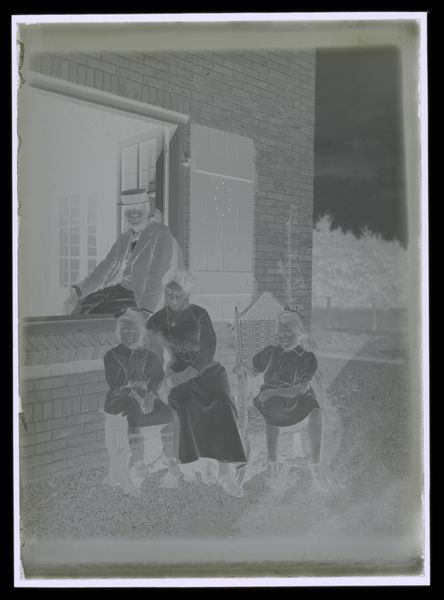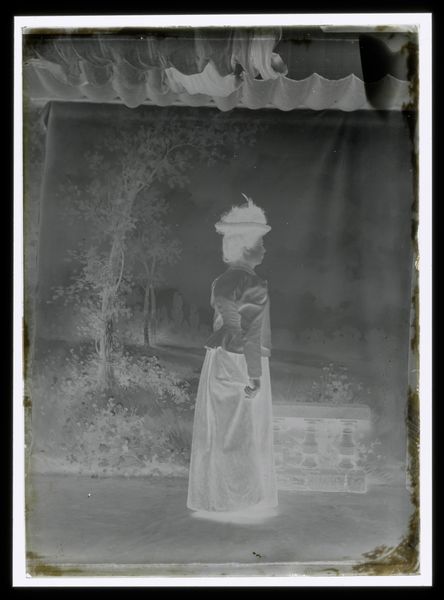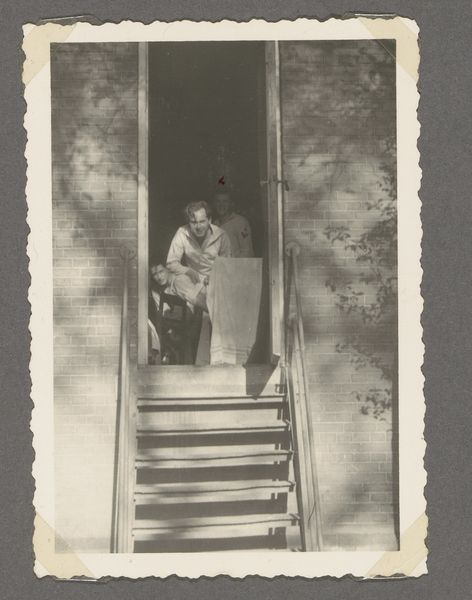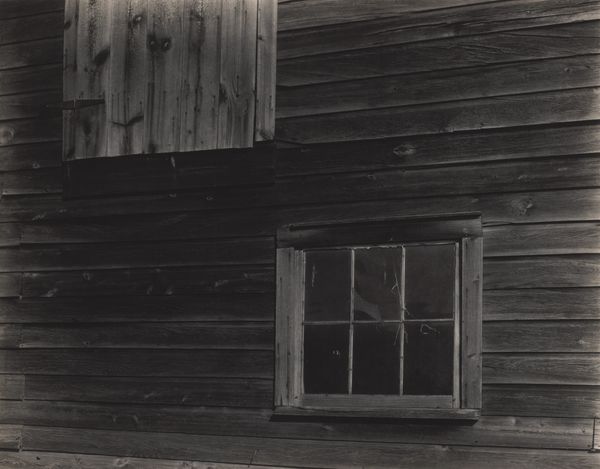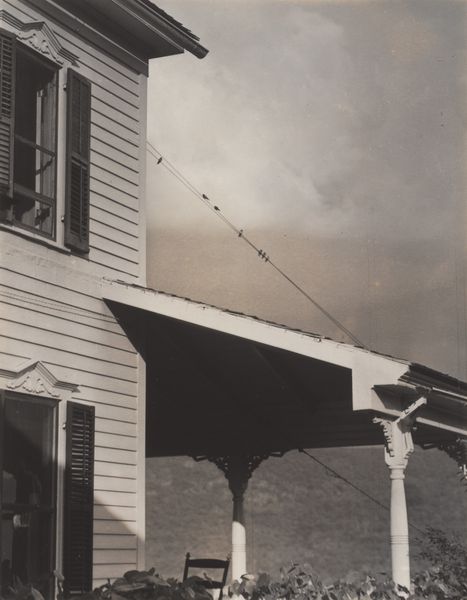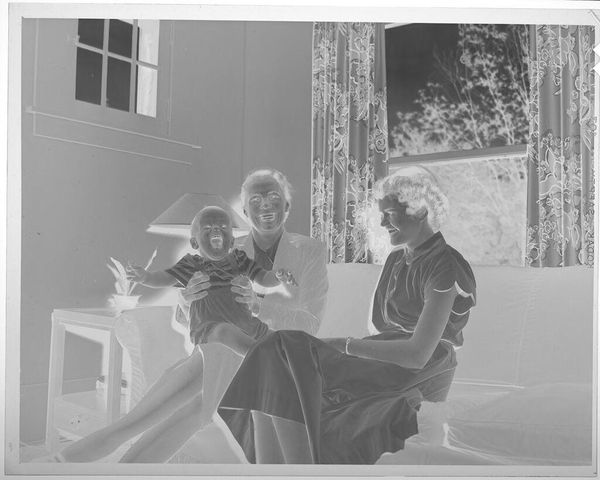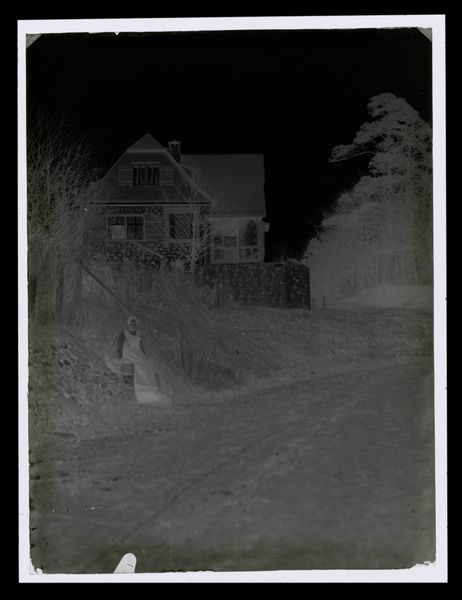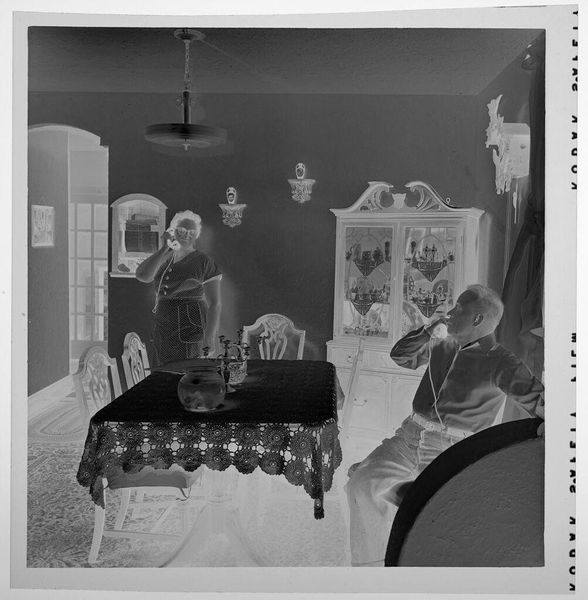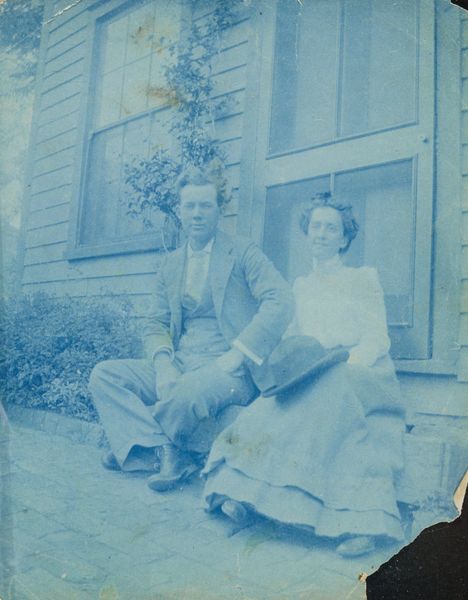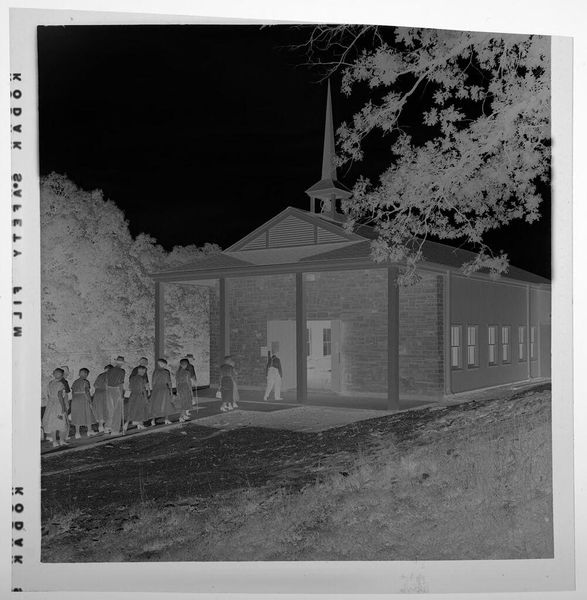
photography, gelatin-silver-print
#
portrait
#
black and white photography
#
pictorialism
#
photography
#
framed image
#
framed composition
#
gelatin-silver-print
#
genre-painting
#
statue
Dimensions: height 130 mm, width 180 mm
Copyright: Rijks Museum: Open Domain
Editor: So, this gelatin-silver print from between 1895 and 1925 is called "glasnegatief" and is by W.G. Hondius van den Broek. The negative image has a formal, posed quality like a genre painting, but it is a photograph of a family in an outdoor domestic setting. What can we read into the reversed values of light and dark? Curator: This work provides us a glimpse into a specific historical moment while simultaneously challenging the very nature of representation. The inverted tones immediately disrupt our expectations, pushing us to consider what the "true" image might have been, and more importantly, whose truth it reflects. Consider the family portrayed. What socioeconomic class do they appear to be? And how does the act of capturing their image, especially in this formal style, reflect power dynamics within the family and broader society? Editor: It looks like they are middle to upper class. The father is well dressed, and the presence of what I assume is a nanny, suggests some wealth. Curator: Precisely. And notice the framing – both within the photograph with the architectural elements, and the physical frame itself. How might these frames be interpreted as constructing and reinforcing social boundaries and class distinctions? Do you see the use of pictorialism as softening or strengthening those boundaries? Editor: I see what you mean. The framing does highlight their position within society, maybe even suggests a desire to be seen in a certain way. Pictorialism seems to add an artistic lens, which softens it somewhat. I hadn't thought about the image in this way before! Curator: The act of photography, particularly portraiture, was never a neutral process. Examining this photograph through an intersectional lens encourages us to analyze not just what is depicted, but also how it is depicted and by whom. This allows us to engage with the complex narratives of identity, power, and representation embedded within the seemingly simple image of a family portrait. Editor: Thank you, that's fascinating! It's shown me how much history is embedded in photographic materials and portraiture. Curator: Indeed. It also offers insight into the photographer's choices, and into the complex power dynamics involved in the photographic process itself.
Comments
No comments
Be the first to comment and join the conversation on the ultimate creative platform.
